Stroll in Star City! Tips for walking through the streets and playing Changsha
The Great Changsha with blue sky and white clouds is still very beautiful

Juzizhou head looks at the Xiangjiang River heading east

Revolutionary activity resort Aiwanting

Ningxiang Tanhe Ancient City Experience the Ancient Scenery of the Western Zhou Dynasty

A shocking performance, Tan River Eternal Love

Nightlife in Changsha has just begun

The endless flow of Changsha night
Impression of Changsha
Changsha, the capital of Hunan Province, was called Tanzhou in ancient times, alias Xingcheng
Changsha is one of the first batch of national historical and cultural cities. After three thousand years, its name and site have remained unchanged. It is known as "Hometown of Qu and Jia","Famous City of Chu and Han", and "Xiaoxiang Zhusi".
There are historical relics such as the Mawangdui Han Tomb, Siyang Fangzun, Wu Bamboo Slips of the Three Kingdoms, Yuelu Academy, and Tongguan Kiln
Changsha has a subtropical monsoon climate, with climate characteristics: mild climate, abundant precipitation, simultaneous rain and heat, and four distinct seasons
Changsha dialect belongs to the New Xiang dialect, mainly represented by Changsha Urban area, Changsha County and Wangcheng District
"Only Chu is talented, but it is prosperous in Si" has always been something Hunan people should be proud of.
It was also mentioned that the first thing most people think of in Changsha is eating. As a foodie, of course, I am not immune
Changsha's Hunan cuisine, barbecue, stinky tofu, flavored shrimp, and sugar-oil cakes make me drool when I carry them--
Best time to travel:
All year round, spring and autumn are the best. Summer is too hot and winter is wet and cold
As a native of Hunan, although I have been to Changsha many times, I think maybe I am too lazy
There are other reasons why a travel note about decent Changsha has not been updated
So I went to Changsha specially this time and came back from a new tour
Many of them are true records of my time in Changsha...
Taiping Old Street Check-in
Taiping Street is located in the southern part of Laocheng District of Changsha. The main line of the block is Taiping Street. It ends on Wuyi Avenue in the north, Jiefang Road in the south, Weiguo Street in the west, and Sanxing Street and Santai Street in the east; the key areas are the historical districts along Taiping Street, Xipailou, Majia Lane, Fujia Lane, Jinxian Street and Taifuli
Tickets: Free
Opening hours: All day
Recommended play time is about 1 hour

When I arrived in Changsha, it was actually late at night. When I arrived at my place, I had a good sleep until noon before getting up. I checked online that Taiping Old Street was closest to me, so I could get up and eat something, so I came over leisurely.


Perhaps a big reason is that there are not many tourists on the streets in the morning, so that there is no need to crowd people to eat. It is probably because Changsha is too hot during the day and many people don't like to go out and shop during the day. Otherwise, Changsha people like nightlife. It's not just a name.


The advantage of playing by yourself is that you can play at a slow pace in one place, and you can walk in and visit any small store you like when you see it.



This creative community also came in the morning and there was no one there, so I took a casual look and went out.

Walking near Taiping Street, you will reach Jia Yi's former residence. Jia Yi's former residence was built during the reign of Emperor Wen of the Western Han Dynasty. At that time, it was the residence of Jia Yi, the king of Changsha. From 177 BC to 174 BC, Jia Yi, a famous political commentator, thinker and litterateur of the Western Han Dynasty, lived here and was then the Taifu of King Changsha. It has also undergone several renovations over the next 2,000 years

9:00-11:30 a.m. and 12:30:-16: 30 p.m. to register with your ID card, so you must bring your ID card when you go out to play

When I entered, I saw many primary school students doing outdoor activities here, reading aloud ancient poems and operas in an orderly manner.


Jia Yi's former residence is known as the "source of Huxiang Culture". The interior of Jia Yi's former residence is also the iconic cultural heritage of Changsha as the "Hometown of Qu Jia". The inside is not very big. You can visit it for half an hour.

Taiping Street is also the most complete ancient street in Changsha that retains the original street pattern. In the renovated neighborhood, there are cultural relics, historic sites and modern historical sites along the streets such as Jia Yi's former residence, Changhuai Well, the former site of the West Pailou of Mingji Fan Palace, the former site of the 1911 Revolution Progressive Conference, and the former site of Sizheng Society. Most people choose to come here when shopping and eating.

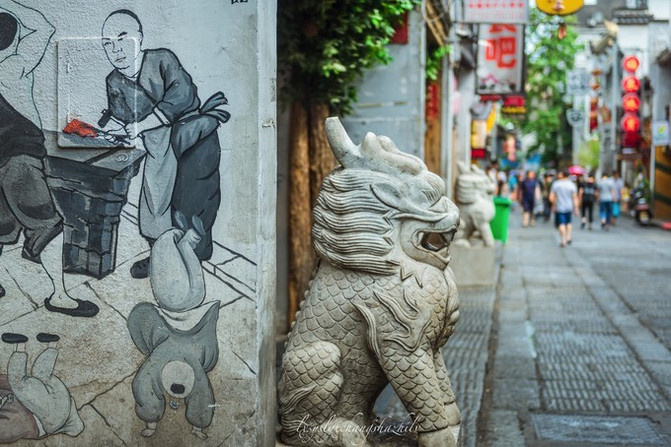
Chaozong Street is named after "Chaozong Gate". This place was the former rice market in Changsha City. It was bustling with people and bustling.
Chaozong Street is also one of the four Mashi Streets currently preserved in Changsha. It was once the seat of Changsha County.
Chaozong Street and the nearby Ziyuan Lane, Jiuruli, Qunshengli and Liansheng Street constitute the historical and cultural district of old Changsha.
Now I heard that the demolition and reconstruction of this place has begun, so I came back to take a look at the old streets of Changsha before the demolition was completely completed.
Recommended tour time: 1 hour
Tickets: Free visit


Now the Chaozong Street Block Shack Reform Project (Phase I) is in progress. The demolition mobilization announcement is playing on the street loudspeakers. Although I feel that it is a pity that there is nothing I can do to change anything, I just want to use the camera to record the place. Bit by bit


The sun shines on the doorsteps of residents 'homes, where red peppers are still drying in the sun


The road surface of Chaozong Street is paved with bluestone slabs, and the south side of the street has been fenced off by blue fences and is undergoing requisition and demolition.


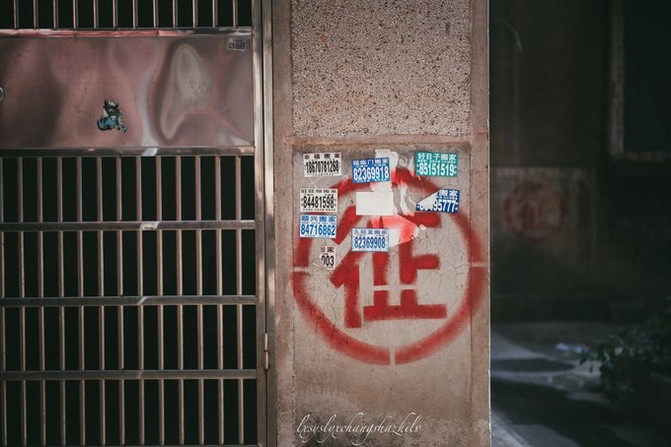
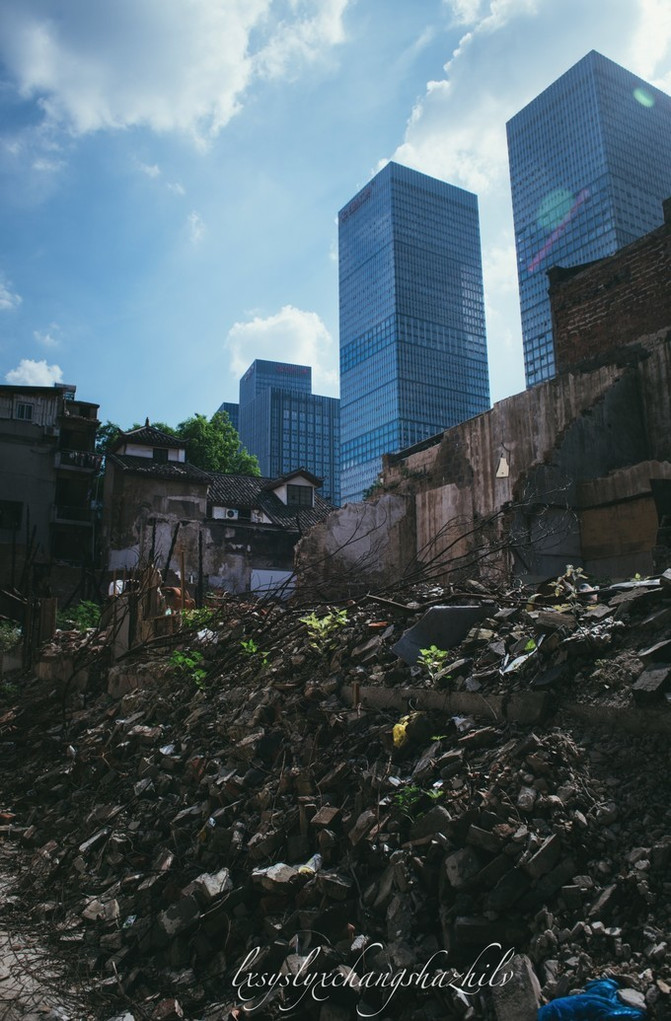
The demolished old building area is in sharp contrast to the high-rise buildings not far away. Perhaps this is the price to pay for urban development

In the afternoon, I made an appointment with friends working in Changsha to play together. Every time I met, I would take pictures from various angles. She thought it would be good to take pictures here, so she came to a few streets to take pictures. It happened that I had a car to go directly to the old campus of First Normal University.



Hunan No. 1 Normal University has the reputation of "a thousand-year-old university and a century-old normal school". Celebrities came forth here during the Republic of China. Here are the alma mater of Mao Zedong, Cai Hesen, He Shuheng, Ren Bishi, Li Weihan, Xiao San, Zhang Guoji, Chen Tianhua, etc.; Huang Xing, the founding father of the Republic of China; Chen Tianhua, the democratic revolutionary who was "hard to reward but also a hero who sailed through the sea"; Zeng Guofan, Zuo Zongtang, Hu Linyi, famous ministers of the Qing Dynasty; and a large number of outstanding figures such as Cai Hesen, Li Weihan, Xu Teli, Yang Changji, Xie Juezai, Zhou Gucheng, Tian Han, Li Jinxi, Zhang Guoji, Tan Yankai, Wang Xianqian, He Shaoji and others studied or worked here
Free tickets open 8:30-17:30
Recommended tour time: 3 hours


Chanting the long night,
Climb the Beidou.
Butterfly is in love with flowers,
Dreams are hard to find.
Books turn over thousands of years of history,
Talk about all the worries of ancient and modern times.
Beautiful young man Xiaoxiang Wei,
Riding the waves of Xiangjiang River to compete for romance.



The predecessor of Hunan Provincial First Normal School was Chengnan Academy founded by Zhang Wei, a Neo-Confucian scholar in the Southern Song Dynasty. Hunan Normal School was established in 1903 and enjoys the reputation of "a thousand-year-old school and a century-old teacher." In 1911, after the school site was relocated to the former site of "Chengnan Academy" in Shushuping, Changsha, it was renamed "Hunan Provincial First Normal School." From the spring of 1913 to the summer of 1918, Mao Zedong studied in Class 8 of the school. Most of the school's current introductions revolve around Chairman Mao's stay in the school
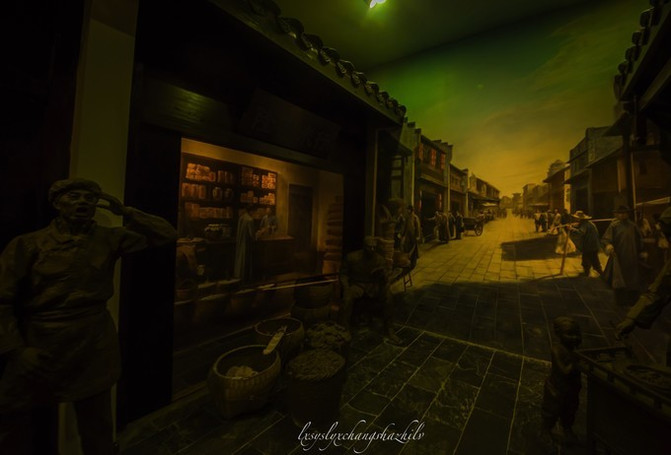
Describing the scene of Chairman Mao studying hard in a busy city

Mao Zedong, a great man of his generation, studied and worked here for eight years. Here, Mao Zedong set up the grand ambition of "transforming China and the world" and completed his transformation from a student, teacher to a professional revolutionary, from a radical democrat to a Marxist; here, Mao Zedong engaged in the work of building a party and a league, and from here he moved towards the party's major cause. In the winter of 1920, Mao Zedong and Yang Kaihui formed a revolutionary partner at the First Division and First Affiliated Primary School. There are currently 14 memorial sites for Mao Zedong's revolutionary activities during his youth on the school, including the school auditorium, Class 8 classroom, Class 8 dormitory, well, study room, newspaper reading room, Gentleman's Pavilion, workers 'night school, attached main room, Mao Zedong taught Class 22 classroom, etc.



When we were at school, we spent our time taking photos while visiting, and we took a few pictures when we encountered good scenes.

I met a tree shadow with particularly beautiful light and shadow and ran to take a few pictures. We arrived late, and there were not many tourists from the First Normal University. We rarely saw a few tourists. It was a rare opportunity not to miss it, haha.





The environment here is very elegant and comfortable, although many of them were later rebuilt. At that time, there were desks and chairs where Mao Zedong sat, and the dormitory where he lived. In the dormitory, he advocated "three Don 'ts", that is, no talk about money, no family trivial matters, no talk about men and women's issues, and concentrate on studying. The statues in the courtyard reproduce the scenes of studying hard with teachers and classmates, discussing the world, and praising and criticizing current affairs.

The student dormitory where Chairman Mao lived

Mao Zedong taught in Class 8 at that time

There were almost always tourists sitting down to take photos at Mao Zedong's location, and it took a long time to take a few photos.

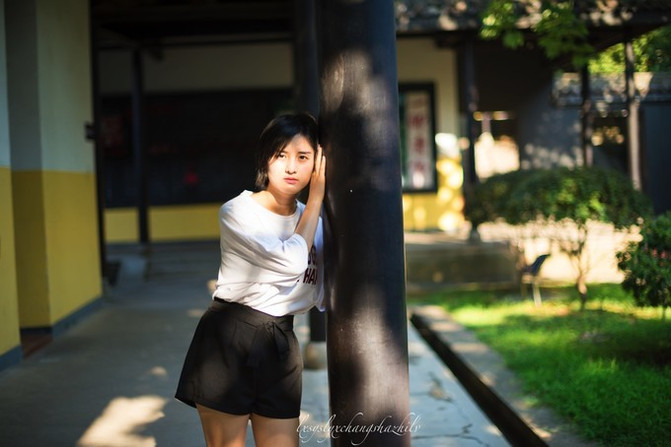
The light in the afternoon is particularly good, which is very suitable for taking beautiful photos


The school's architectural style is mainly Western-style, but there is no lack of traditional Chinese architectural techniques. The patio, gate, and roof in the courtyard are either made with four corners or six corners, decorated with treasure roofs, all showing the combination and penetration of Chinese and Western cultures.


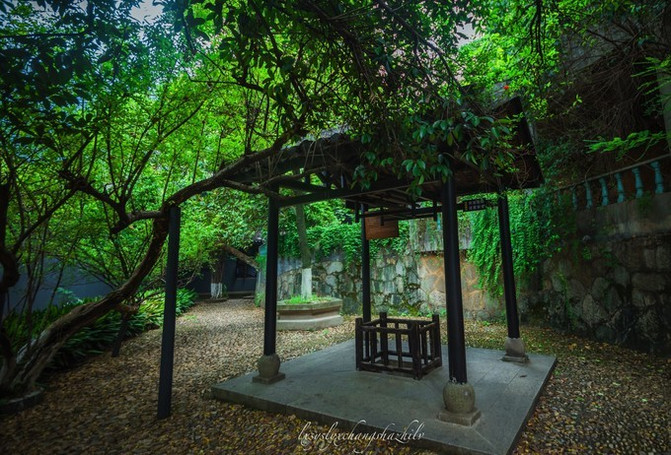
The only well that survived the "Wenxi Fire" was still quietly located in a corner of the school building. In order to strengthen his physique, Mao Zedong drew water and bathed by the well every day, regardless of heat and cold, to exercise his physical fitness and lay the foundation for the future revolutionary cause.

Look in the mirror, apply makeup, and then admire yourself in front of it


In fact, the First Normal University was closed at this time, and many exhibition halls were closed. Fortunately, the uncles and aunts on duty did not drive us away because of this. This reminded me of many scenic spots and museums that it is normal for people to be closed. Although the exhibition halls were closed, our photos were still not affected in any way. I am so happy







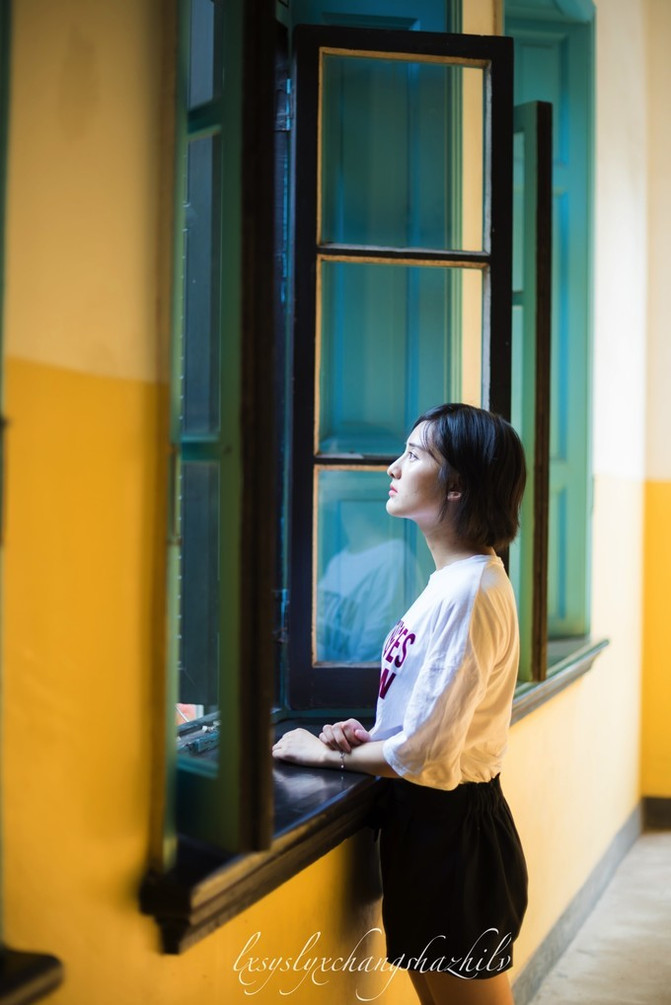




I'm almost ready to leave. It feels good not to have anyone disturb us taking pictures.


In fact, this photo is not a taxi, but a deliberate action we took when we took pictures. Haha, it feels quite fun.
Come with me to take a walk in the streets of Changsha
After leaving the First Normal University, he went to a commercial building near Pozi Street with his friends upstairs. After picking up things with his friends, he saw that the viewing angle was good, so he ran to the roof of Daxia and took these photos of Changsha. Although the shooting positions were limited, it was also good to accidentally go up to the bottom of the building
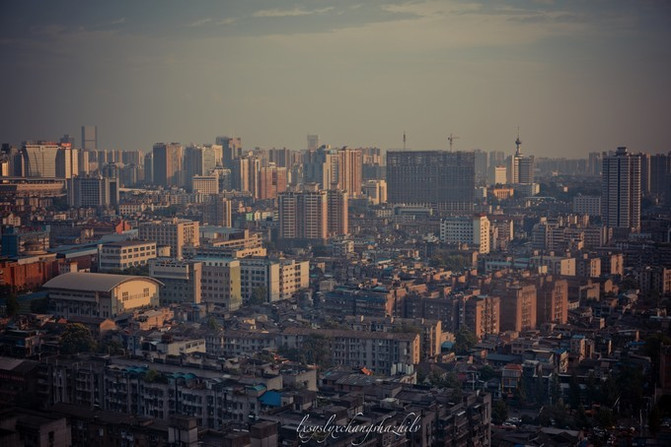



It was almost sunset in Changsha downstairs. After eating from the restaurant, it was already completely dark in Changsha. I decided to go for a walk on the Juzizhou Bridge and take some beautiful photos of the night scene. At this time, what I needed was a fixed-focus lens with a large aperture, so that the effect taken will have various beautiful light spots. Even passing traffic can play a role in replenishing the light. Okay, the beautiful photos begin to take a wave of photos


The cooperation of my friends is also good. My shooting intentions can be understood and understood quickly. The nightlife in Changsha Bar has just begun. Unfortunately, I have hardly been to a bar since I fell in love with photography. It is still a lot easier to learn photography technology. Share more beautiful photos with everyone
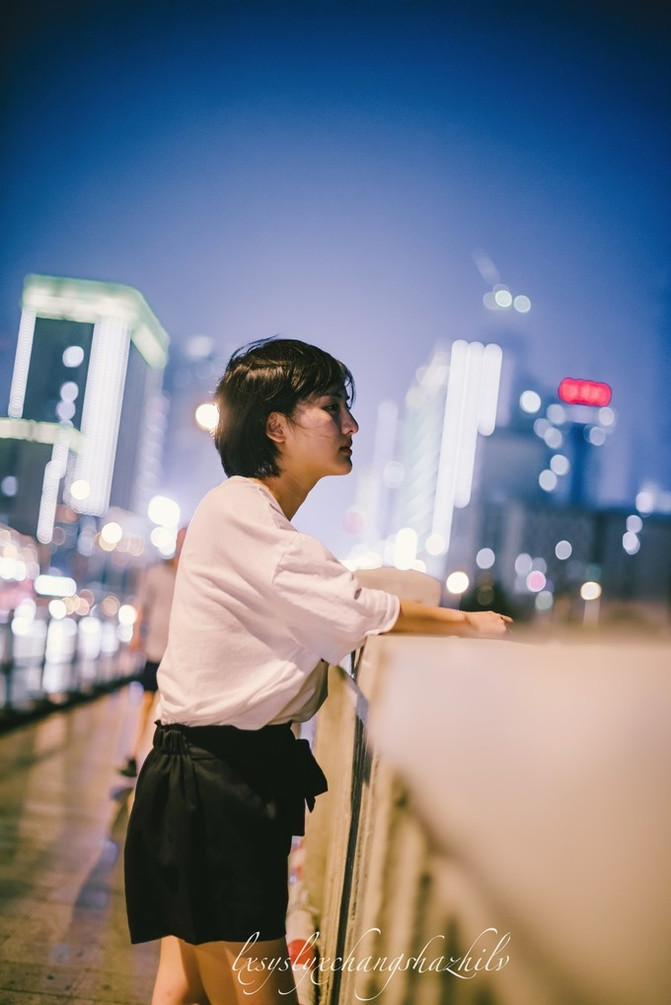




The gentle evening breeze blows gently, the lights of the city





Changsha is not the kind of city that will amaze you at a glance, but you will live comfortably here
Playing through the ancient city of Tanhe in Ningxiang
Changsha's subway lines are currently open. If you are afraid of traffic jams during the rush hour, you can choose the subway to travel. Many times, I have been to too many ancient cities and towns, and I feel that they are all in the same way as Datong Xiaoyi. However, now I want to recommend a very interesting place around Changsha. Many friends may find it strange. His name is Ningxiang Tanhe Ancient City, which belongs to Songcheng Group. In Hangzhou. Lijiang. Sanya has Songcheng tourism and everlasting love!
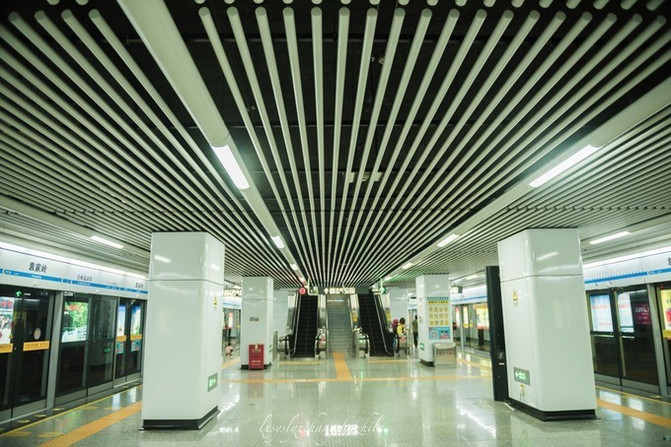

The ancient city of Tanhe in Songcheng came from the ruins of Tanhe River. It is located in Ningxiang County, Changsha City, Hunan Province. It is China's first weekly cultural theme park. The Zhou Dynasty was the source and heyday of Chinese civilization. It created brilliant cultural wonders. Ningxiang, the location where it was located, is known as the "Hometown of Bronze in Southern China". A national treasure named "Four Sheep Fangzun" unearthed from Huangcai in Ningxiang also reveals that there is buried here an ancient Chinese civilization that has been long and mysterious enough to shock the world-the "Tanhe River Civilization". Ningxiang Tanhe Ancient City is a large-scale Western Zhou cultural theme park in China. In Songcheng Tanhe Ancient City, you can experience the grand scenery of the Western Zhou Dynasty here in the old days. You can travel through time and space and into the ancient times together, talk with the ancients, be with history, and feel the 3000 years ago. The prosperous age of the Western Zhou Dynasty and the beautiful Western Zhou style of the ancient city of Tanhe in Songcheng.
Scenic spot ticket purchase link;br Scenic spot opening time: 10:00-17:00
Recommended play time: 7 hours


The giant statue above the main entrance of the scenic area is 40 meters high and 35 meters wide. It is known as the Goddess of Siyang Fangzun.
This shape evolved from the art of two important national artifacts unearthed in Tanhe, the Four Sheep Square Zun and the Human Face Pattern Square Tripod

When I arrived at the entrance of the scenic area, the scenic area had just opened. I thought it was early and there would be not many tourists. Unexpectedly, the entrance of the scenic area was already crowded. Long lines of nervous and orderly tourists could not wait to enter the park early. This was unexpected and far beyond my expectations. It seems that Hunan people like to find new vacation fun.
Ticket information: Tanhe Ancient City (including Tanhe Ancient City's Eternal Love Performance): Adult ticket is 80 yuan, preferential ticket is 40 yuan;
Tanhe Ancient City (including Tanhe Ancient City's Eternal Love Performance): Adult tickets are 260 yuan, preferential tickets are 220 yuan, parent-child tickets (one big one and one small one) are 460 yuan, and family package tickets (two big one and one small one) are 680 yuan.
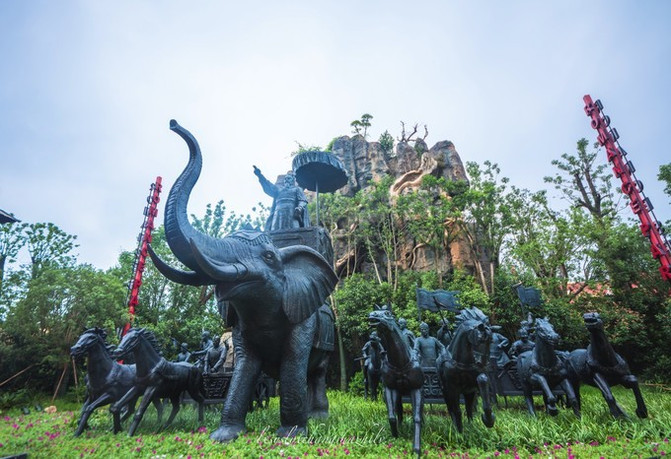
As soon as I arrived in the scenic area, I saw this huge statue showing the battle scene of the Golden Ge and Iron Horse in the Battle of Muye during the Western Zhou Dynasty. This was a famous battle in history in which the few defeated the many, the weak defeated the strong, and took the initiative. It ended 600 years of rule of the Shang Dynasty! It opened the way for the comprehensive rejuvenation of the ritual and music civilization in the Western Zhou Dynasty

This is the distribution map of visit locations in the Tanhe Ancient City Scenic Area. I recommend the tour routes to you: Entrance of the Ancient City--Statue of the Goddess of Siyang Fangzun--Wuwu Square--Zhougong Street--Western Zhou Style Street--Jiangziya Square--Beach Amusement Area--Shehuo Square--Jiuchi Playing Water Recreation Area--Sacrifice Square--Western Zhou Palace--Tanhe Ancient Love Theater

Legend has it that Ji Fa, King Wu of the Zhou Dynasty, met Ning Ning, the daughter of a bronze craftsman, on the bank of the Carbon River when he was young. The two fell in love at first sight. Later generations called this bridge on the Carbon River the Love Bridge in memory of the place where Consort Ning and King Wu made their bond.

Now the guardrail of the Love Bridge is filled with blessings and love from various lovers on both sides, which also adds to the charm of this Love Bridge.



In just a while, every resting area in the scenic area was already crowded with people, and many brought their families, elderly people and children here to play and entertain.

There are many strange houses on this Zhougong Street, including Phantom Space, Invisible Cabins, Horizontal Houses, Inverted Houses, Sloped Houses, Mirror Maze, and Haunted Houses. These houses turn things upside down. When people enter, either beautiful women are beside them, or their heads are removed, or they step up the wall, or walk upside down. They are dizzy for a while and it is difficult to distinguish things. It is also very interesting. Everyone is competing to take photos here to reminisce.



Tourists who are dumping the house are taking photos in conjunction with the scene. It is very fun to take a set of creative and personalized photos here. It can be seen that it is still very popular among tourists who come to play.


If you are visiting the Western Zhou Style Street, don't leave for a while. The wonderful performances here are about to start.



Various costumes from the Western Zhou Dynasty and funny dance flash downs were very interesting. The happy crowd also laughed loudly. Many tourists took out their mobile phones to record these wonderful scenes!

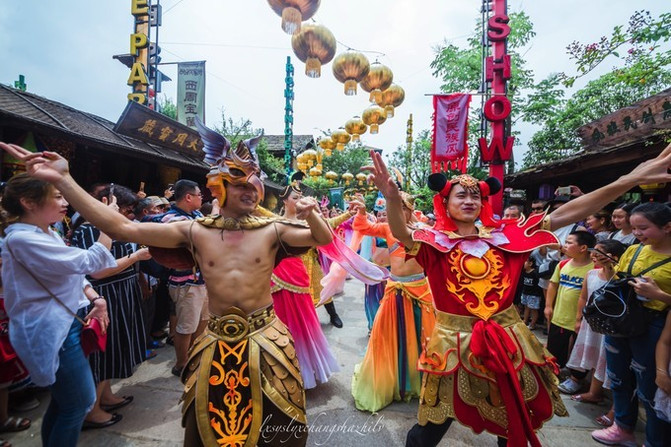


Who is such a lovely child that no one claims here? If not, I will be prepared to take it home, haha


There is a long queue in every area to play. This room is the activity area for the ghost of Daji. It seems that the charm of beautiful women has attracted many men, women and children to come and watch.
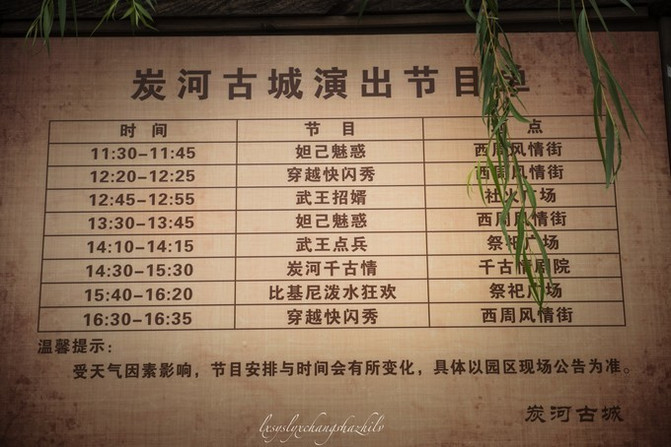
The performance schedule of various exciting activities and programs in the scenic spot will sometimes be adjusted in time. For details, you can consult the staff of the scenic spot on the same day.


This is a beach play area and a favorite place for families and friends

It seems that all the friends like these challenging games, but they are just not happy with each other.


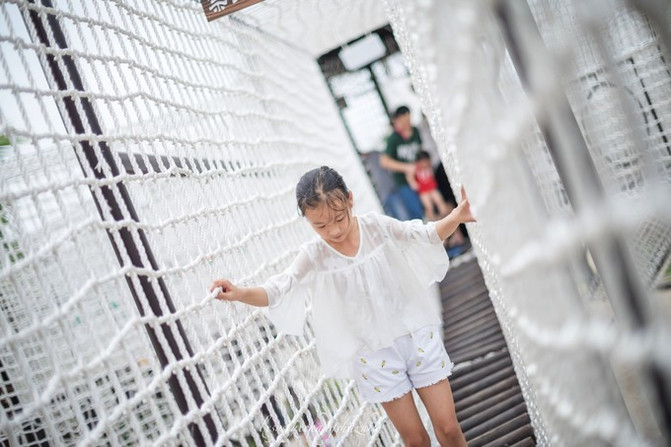
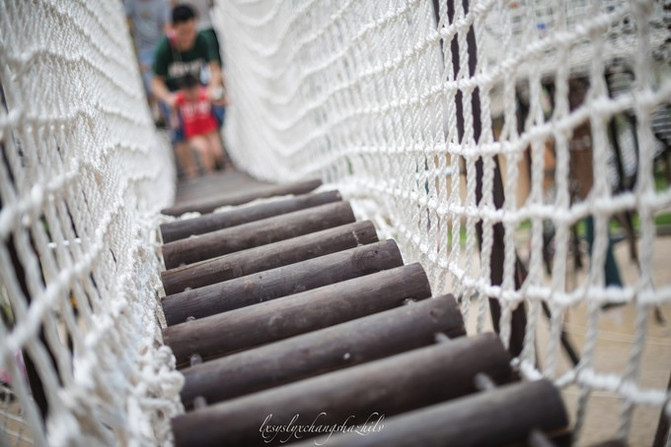

It seems that this little friend has just learned to walk and has come to challenge himself. The spirit of Hunan people who dare to fight hard and venture is well demonstrated in you.
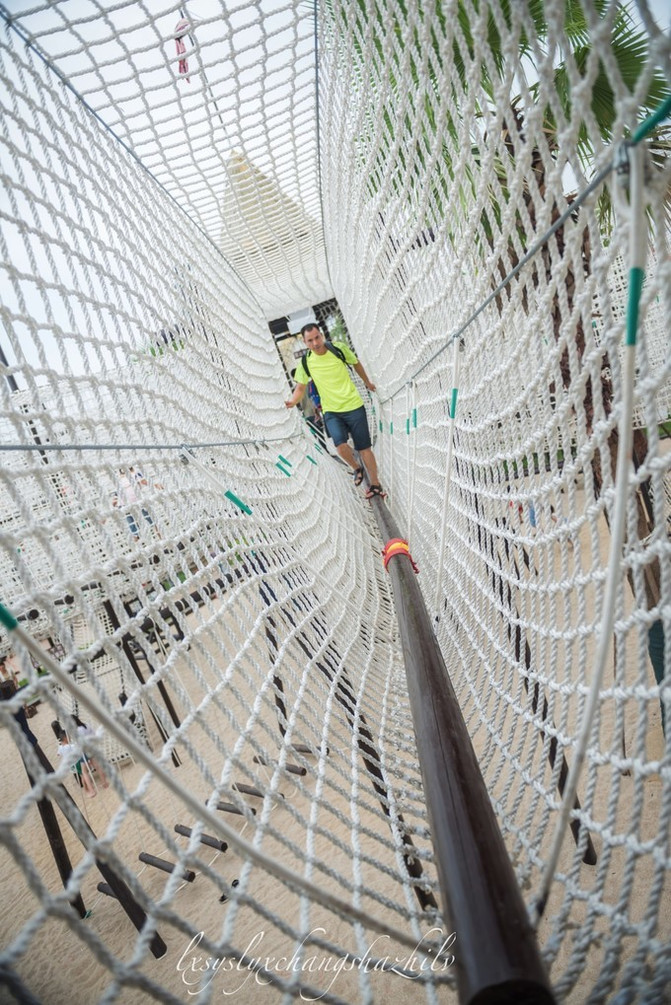

These little sisters also showed no weakness and joined in one after another and enjoyed it
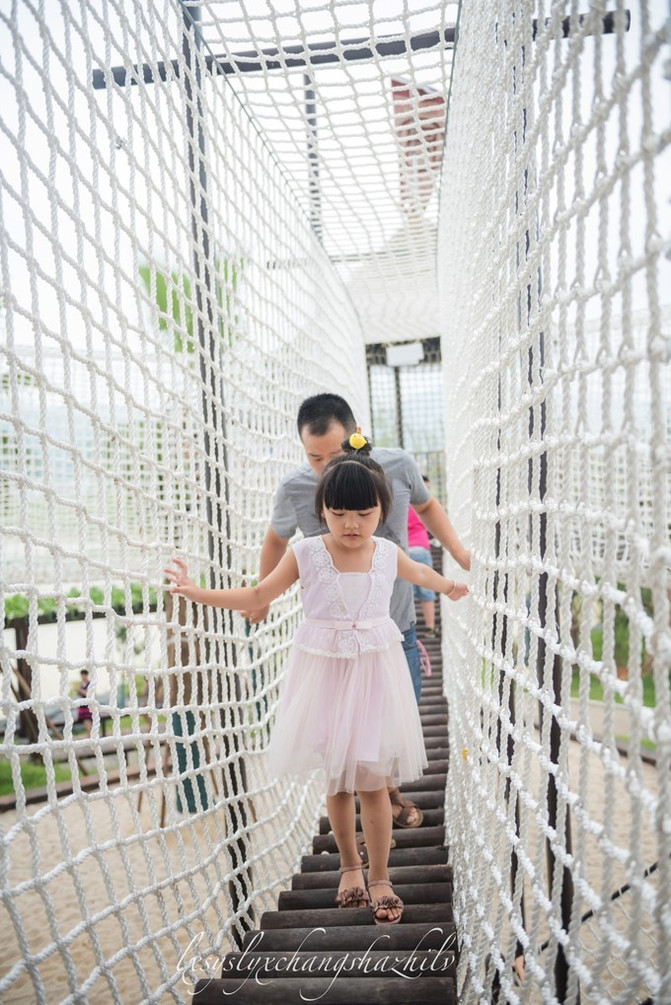
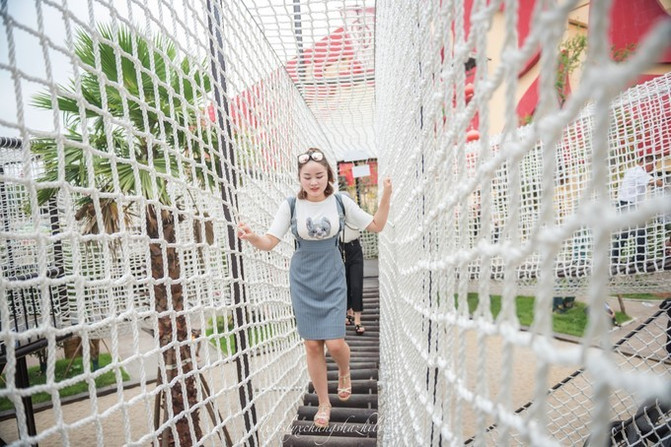



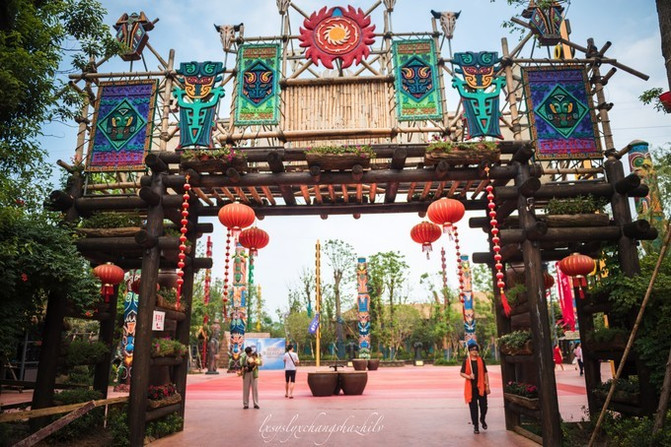
In the past, King Zhou once poured wine into a pool to enjoy the luxury of entertainment and played in it with Daji. History called it the "wine pool." Today, the wine pool in Tanhe Ancient City is a water play area carefully built for tourists. It is equipped with more than a dozen types of water play equipment such as water swings, pontoons, wooden bridges, ring bridges, and rope bridges, allowing tourists to enjoy the fun of splashing water, playing in the water, and swimming in the water. Happy time

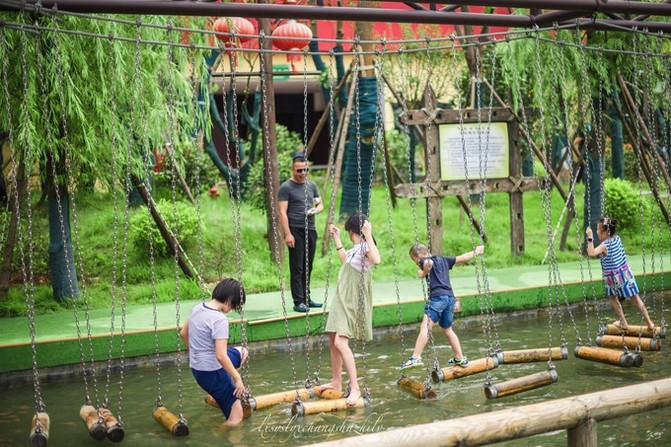
Unexpectedly, this area is also the favorite of Cheng Xiaopeni friends. The adults are also quietly watching their Xiaopeni friends on the shore.

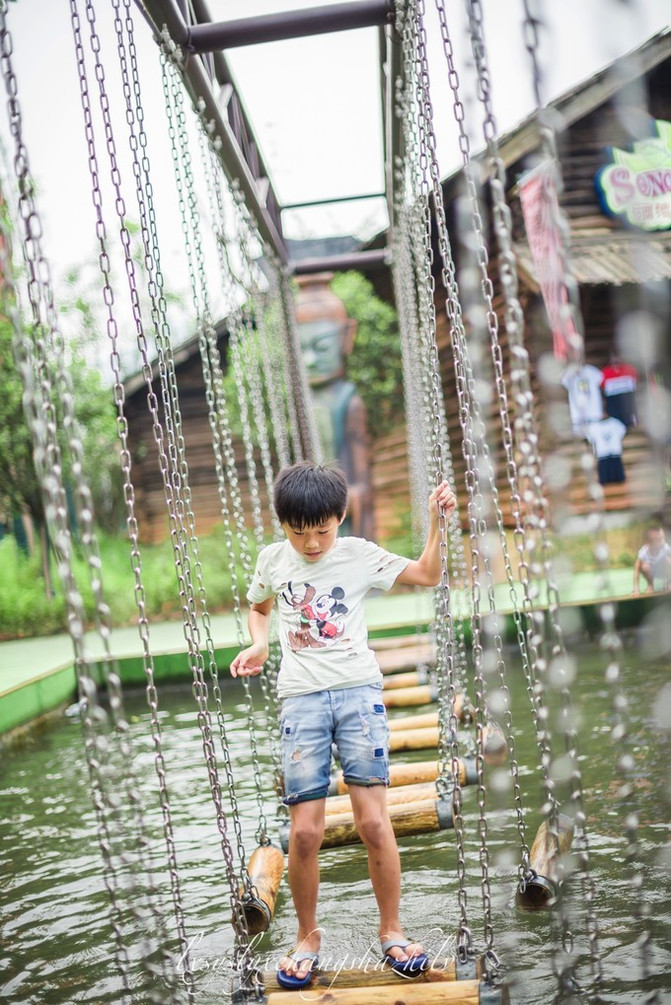




"It is called Xia because of its great etiquette; it is called Hua because of its beauty." The definition of China since ancient times began in the Western Zhou Dynasty. As the founder of the Chinese ritual and music system, the Western Zhou Dynasty was a powerful dynasty where clothes must be exquisite, things must be abundant, people must learn etiquette, the country must benefit, and monarch and minister must call our country and people.
The Royal Palace of the Western Zhou Dynasty was also the place where the Emperor of the Zhou Dynasty lived, worked, and sacrificed his life. It was built according to the records in "Kao Gong Ji". The main buildings included the main palace, ancestral temple, sheji altar, aristocratic mansion, military service hall, Qingyang Pond, etc. Tanhe Ancient City restored a simple and solemn palace three thousand years ago.


The Duke of Zhou governed the world with etiquette and educated the world with music and dance. Because of its elegance, grace, and peace, chime music and dance are also known as "elegant music", and are the most representative form of performance in the Western Zhou Dynasty. In the sonorous and distant Western Zhou Dynasty elegant music, the audience can dream of going back 3,000 years, enjoying the cultural feast of the Bronze Kingdom, and listening to the Yellow Lu Bell of etiquette and music civilization.


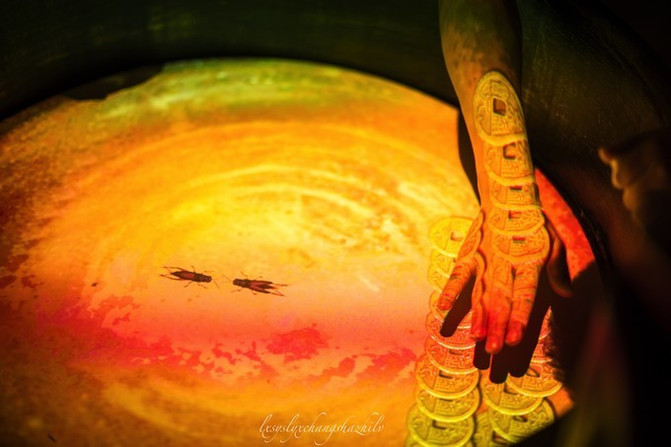
Hai Xiao played a game here and had a little fun. The competition results were not bad and he won!


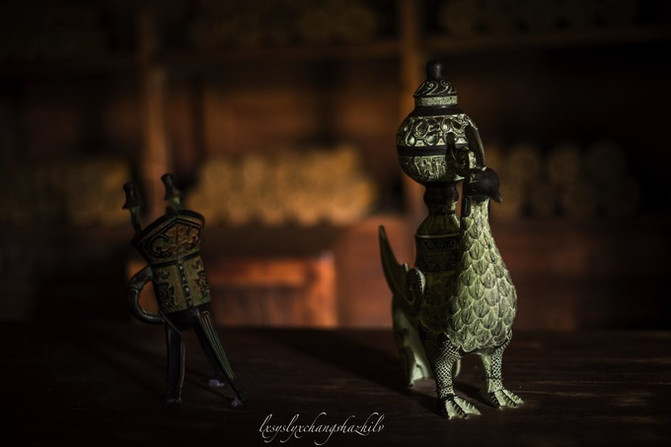

It is said that this is a mirror of your past life where you can see your previous life's marriage. If you are fated, your previous life will be displayed here. It seems that my marriage in my previous life is still a dignified and elegant beauty. Hehe


The most unique thing about Tanhe Ancient City in Songcheng, Ningxiang is that this large-scale indoor children's play complex has been built next to the Qiangu Qing Grand Theater. No matter whether it is windy or rainy, it will not be affected at all, and it is also generous to bring children and parents. Travel! This is simply a great parent-child playground for indoor activities. There are frog jumping, jungle adventure, bumper cars, star fitting rooms, etc., all of which are great places for children to play


The most exciting thing here is of course the frog jump. The "frog jump" amusement machine is a kind of amusement equipment that rises at a constant speed and descends in stages. The equipment is equipped with six seats. After the operator waits for the tourists to sit down, buckle up the seat belts and poles. The tourists will rise to a certain height and then descend in a leaping manner. It is like sitting on the back of a big frog and is deeply loved by the tourists and friends.



Of course, there are also amusement projects with children's voices and interests

Of course, there are also fun bumper cars in the children's play complex. Originally, my big friend wanted to go and play, but after waiting for a long time, they were occupied by these children.

This is the Martial King's training that started in the Sacrifice Square. If you don't have a good grasp of the time inside, it will be easy to miss it. I have a little regret when I missed the performance of Martial King's son-in-law recruitment because I went to the indoor children's play complex, so I'm here to remind everyone to remember
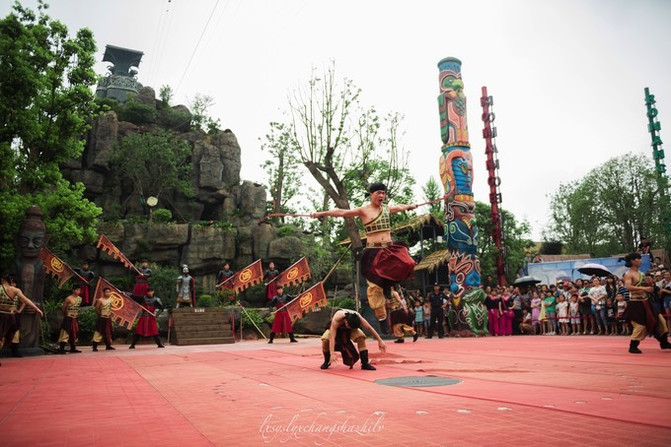

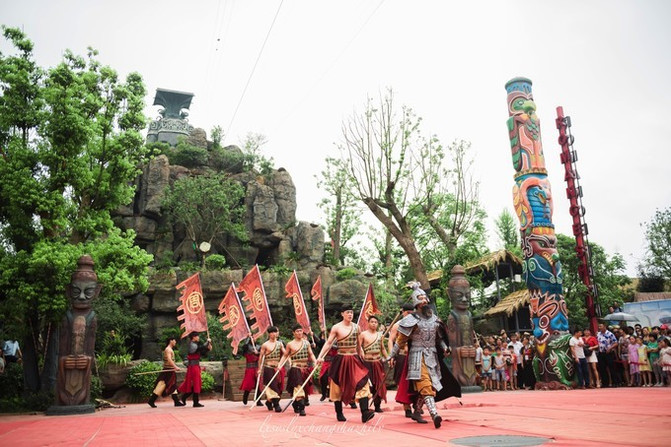
"The Eternal Love of the Tanhe River" is based on the splendid history and culture of the Western Zhou Dynasty and the theme of the legendary story of the "Four Rams Fangzun", an important weapon of the country. The heroine Consort Ning sacrificed her life to successfully create the Four Rams Fangzun, save her lover and the people of Zhou. The love story between King Wu and Ning 'er over a thousand years moved many audience present to tears. The performance used advanced sound, light, electricity and other technological means and stage machinery. Hundreds of actors performed passionately, in water, land, Empty three-dimensional space, singing a moving song of the legendary Tan River. My ticket for the Tan River Eternal Love performance started at 2:30 pm, and this historical story was vividly interpreted in just one hour.
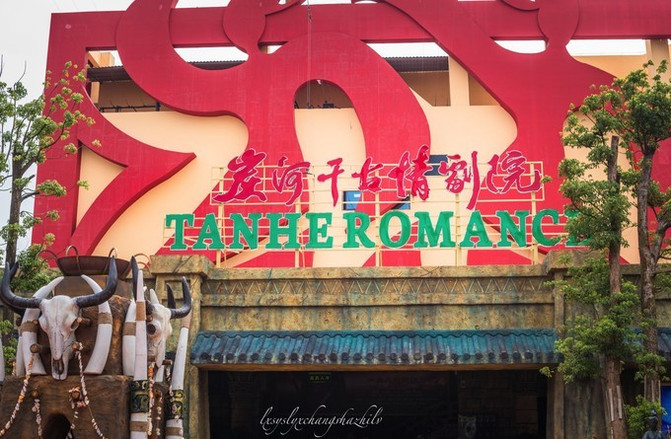
Tanhe Eternal Love was created by Songcheng Performing Arts, with a crew of up to 200 people, using tens of thousands of stage machinery, hundreds of thousands of LED light sets, and more than 1000 sets of props, and using advanced sound, light and electrical technology to create a 360-degree panoramic drama. It is claimed to be the most technologically sophisticated tourism performing arts in Hunan Province

It is said that since its first trial opening in July this year,"Tanhe Ancient City in Ningxiang has performed more than 100 performances of" Tanhe Eternal Love "and more than 350,000 viewers, creating an unprecedented miracle in the Hunan tourism and performing arts market. It is as if a 10-level hurricane detonated tourism in Ningxiang and even Hunan, making the" Performing Arts Hunan Army "suddenly appear in the national tourism and performing arts industry.
On the eve of the start of the performance, the seats were almost full, and there were also tourists and friends entering the theater one after another.

Act 1 "In the River Island"
The dove at the pass is a beautiful lady in the river island, and a gentleman is a favorite. The cry of the dove leads us through thousands of years to the beautiful bank of the Tan River, where the ancient "Book of Songs" is sung, and a group of young girls are singing and dancing among the green mulberry grass. The young King Wu and the beautiful Ning 'er met here. They knew each other and fell in love. It is true that they are both beautiful women born in Hunan.



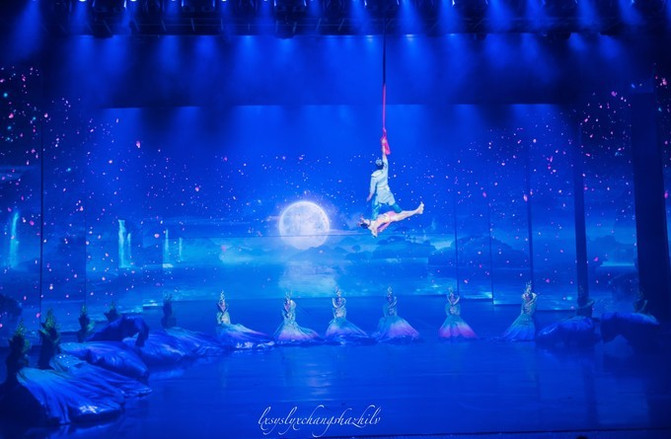

Act 2 "Undying Love in the Coal River"
At Daji's instigation, King Zhou killed King Wu's brother and coerced King Wu to create the Four Sheep Fangzun on the condition of the survival of Zhou. In order to save her lover and the people of Zhou, Ning 'er sacrificed for her husband and staged a poignant and lingering love in Tanhe. The euphemism and moving performance of this story is very poignant and beautiful





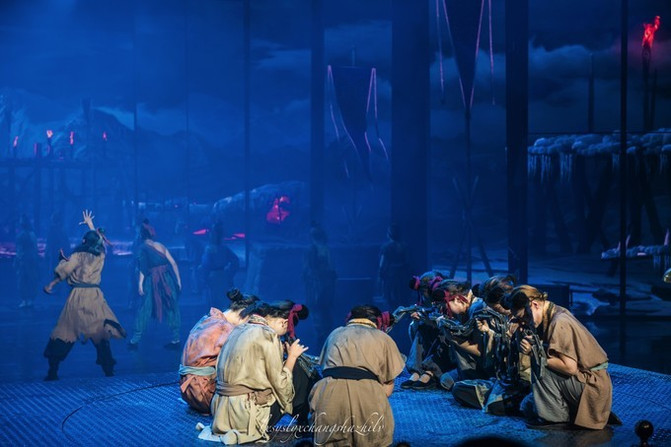


Act 3 "Daji Yanwu"
On the day of the completion of Lutai, King Wu presented to King Zhou the treasure of the palace, the Four Sheep Fangzun. King Zhou was very happy and set up a wine pool and meat forest in Lutai to entertain the vassals from all directions.



The performance of Daji coming out of the bath was a very unexpected surprise for the foreign girl. The charming expressions kept the audience watching the performance focused on it, for fear that they would miss that link.



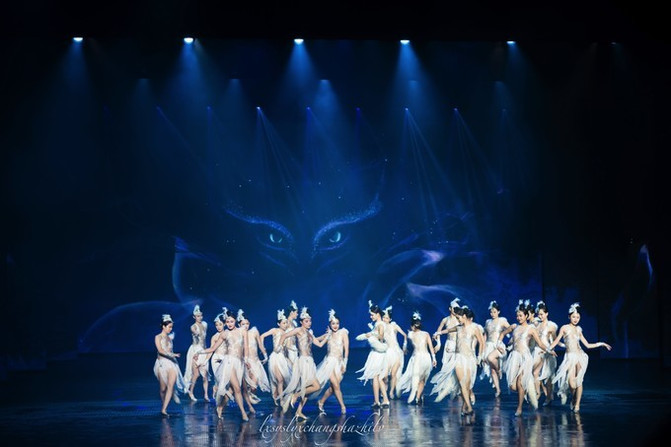
In the gentle countryside where money is intoxicated, an important change that determines the historical pattern of the Shang and Zhou Dynasties is quietly brewing...

Act 4 "Battle of Muye"
In 1046 BC, King Wu personally led 300 chariots, 3,000 tigers, and 45,000 armored soldiers to fight against hundreds of thousands of King Zhou's army in Muye, known in history as the "Battle of Muye." This is a war in history in which the few defeat the many, the weak defeat the strong, and the preemptive strike. It has had a profound impact on China's historical process.





Just when the heroes who went to war were at the end of their lives, it was not Prince Charming who fell from the sky, but the omnipotent Jiang Taigong. In the end, King Wu's army defeated the many with its few and defeated the strong with its weak, and won the Battle of Muye, which had a profound impact on the historical process of China. From then on, the 800-year Zhou Dynasty began.

The fifth act,"Love in Ningxiang", flows through the years. Beautiful and moving love legends echo here, and earth-shaking achievements continue here. Love in Ningxiang embodies the great city spirit of Changsha people who "worry about the world and dare to be the first". This is the only large-scale song and dance show in Hunan and even in the country with the theme of Western Zhou culture. It is praised by cultural scholars as "solving the mystery of the Four Sheep Fangzun."


The long charcoal river has flowed for three thousand years, and the story of heroes and beauties is sung here. Truth, goodness and beauty, persistence and perseverance, dedication and love have influenced generations of Ningxiang people. This is the legendary place, Ningxiang, the hometown of Consort Ning.

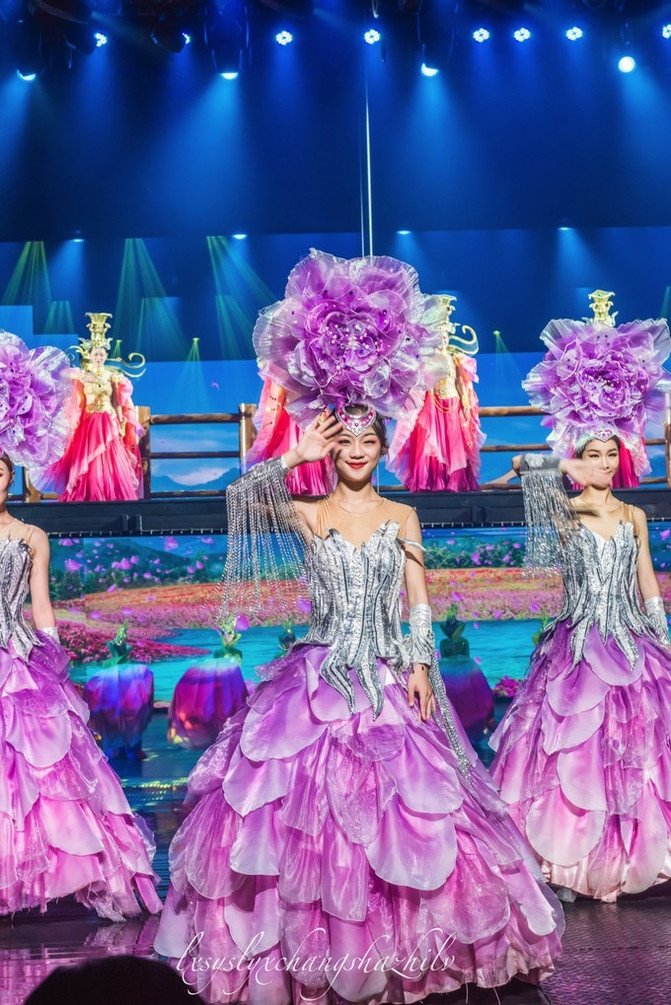
Chili eating competition
After watching the performance, I came out of the Sacrifice Square and started a challenging chili eating competition. If I won the first place, I would get a gold coin worth 1500 yuan. It was very tempting, and it made me itching. I wanted to go up and try it, but I thought that this was the territory of Hunan people and definitely hid dragons and tigers, so I slowly started to retreat and watch silently

There were 10 spectators who volunteered to go up, and everyone was eager to try, especially the third person from the right, who was eager to eat for his eldest brother.



In the two-minute competition time, whoever eats the most peppers will be the first place. As expected, the big brother in black won the first place.


Bikini splash carnival
The pepper eating competition had just ended, and then the water-splashing carnival began in the square. The first thing to appear was a bikini dance show that ignited everyone's passion.

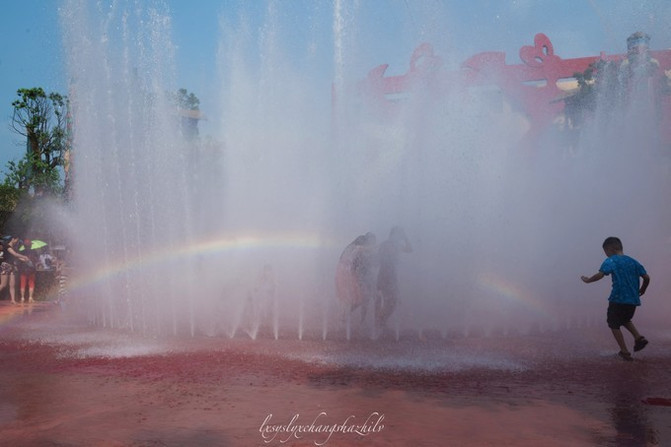
Playing with water below in the scorching summer attracted many small friends to participate, and the water spray in the square also caused a beautiful rainbow to hang in the air? No matter adults or children, they will splash water on their bodies whenever they see anyone. Fortunately, I came prepared and brought a small umbrella. It was indeed a wise choice, haha




The ancient city of Tanhe in Ningxiang has also come to an end here. I think many friends still continue to play the entertainment projects here. Coming here has really brought me a lot of joy and made myself do it again. There are also many families, couples, and single beautiful and handsome men who come here. I heard that there are also tourists from Guangdong who come here specially. I wonder if Songcheng Tourism is also considering opening a new branch in Guangdong that is as fun

Going to transportation:
1. From Changsha Railway Station, take Metro Line 2 to the west of Meixi Lake to Wangchengpo. Exit from Metro 2A, turn right after exiting the station and you will find Changsha West Railway Station.
Go to the waiting room in Area C of the station and buy a ticket to Huangcai to enter the station. The ticket price is 23 yuan/person. The time is about 2 hours. Wait directly in the parking lot and depart. There are many motorcycles at the drop-off point. The price is 5.6 yuan and it will arrive at the entrance of the scenic area in less than 5 minutes.
3. By car:
① Changsha West Bus Station: Take the bus from Changsha to Ningxiang South Railway Station (about 1 hour)--Take No. 118 to the entrance of the scenic spot (about 1 hour)
② Changsha East Bus Station: There is a direct bus to Huangcai Market at the ticket hall-it takes about 30 minutes to walk (about 8 minutes to consider a motorcycle)
③ Other stations: Take a bus to Ningxiang South Railway Station-transfer to No. 118 to go directly to the scenic spot
4. By high-speed rail: Take Metro Line 2 (about 50 minutes) from Changsha High-speed Railway South Station/Bus No. 68/63/348/66 to West Bus Station-Take the bus from Changsha to Ningxiang South Station (about 1 hour)--Take 118 to the entrance of the scenic spot (about 1 hour)
5. Self-driving guidelines:
● Changsha direction: Tanhe Ancient City is 45 kilometers away from Ningxiang County and about 100 kilometers away from the provincial capital of Changsha.① Via National Highway 319, Jinzhou Avenue, Changzhang Expressway Yulan Road → Ningheng Expressway → Shanghe Street ② Via Changshaolou Expressway →043 County Road, 096 County Road, 209 Provincial Highway → Huangning Road, Shanghe Street
● Other directions: ① Yiyang direction: You can pass Provincial Highway 308, County Highway 028 → Provincial Highway 206 → Shanghe Street ② Loudi direction: pass Provincial Highway 209, Provincial Highway 312 → Shanghe Street ③ Changde direction: pass Changchang Expressway, 028 County Road → Ningheng Highway → Shanghe Street
Chuanshan Society looks at the early years of the Republic of China
Chuanshan Society is located on the north side of Zhongshan East Road. It is a single-story three-way courtyard house. During the Guangxu period of the Qing Dynasty, it was the Temple of Zeng Guofan. After the Revolution of 1911, some scholars in Hunan established the "Chuanshan Society" here to study the teachings of Wang Chuanshan, a materialist thinker in the late Ming and early Qing Dynasties.
Opening hours: 9:00-17:00 (Admission stops after 16:30)
Tickets: Free, registration with ID card

In 1921, Mao Zedong and He Shuheng founded a self-study university here. The four characters "Chuanshan Society" at the entrance are written by Mao Zedong himself.


The earliest Chuanshan Society was Zeng Guofan's Temple, built in 1875. In 1914, Chuanshan Society was founded in the ancestral hall to study and promote Wang Chuanshan's thoughts. According to Hu Shi's memories, Mao Zedong drew up the "Charter of Hunan's First Self-Study University" based on his speech in "A Self-Study University" in 1920 and came to his home to ask him for approval. Therefore, the name of "Hunan Self-Study University" was coined by Hu Shi.
On August 16, 1921, Mao Zedong published the "Organizational Outline of Hunan Self-Study University" in Hunan's Ta Kung Pao, and at the same time he drafted the "Declaration on the Founding of Hunan Self-Study University." In September 1921, Hunan Self-Study University founded by Mao Zedong, He Shuheng and others opened its doors. He Minfan, the former president of Chuanshan Society, was the president and Mao Zedong was the dean.


This room was where Chairman Mao lived before this time.

This university was the first school to train cadres after the founding of the Communist Party of China. From its establishment in August 1921 to its closure in 1923, there were more than 200 self-study university students, cultivating and transporting a large number of backbones for the Communist Party.


Changsha Bamboo Slips Museum is currently the only new modern special museum in the world that integrates the collection, protection, sorting, research and display of bamboo slips. It is also an important cultural attraction and open window in Changsha. The bamboo slips collection in the exhibition hall mainly include 140,000 annals dating from the Three Kingdoms and the Sun Wu period unearthed in 1996 and more than 20,000 annals dating from the early Western Han Dynasty discovered in 2003. In addition, there are 3500 pieces in other collections such as bronze, lacquer wood, calligraphy and painting, gold and silver
Opening hours: 9:00-17:00 (No admission after 16:30, closed on Tuesdays)
Tickets: Free, registration with ID card
Recommended tour time: 4 hours

There are two floors in the museum, with a lot of collections, mainly bamboo and wood, calligraphy and paintings, etc. The first floor of the exhibition hall is "The Road to Civilization-Basic Display of Changsha Bamboo Slips Museum". The display consists of four parts,"Wu Bamboo Slips of the Three Kingdoms","Chinese Bamboo Slips","World Character Carrier" and "Chinese Bamboo Slips Calligraphy". On the second floor, I forgot to go up and read it without paying attention




The museum introduces the making process of bamboo slips, China, and the history of bamboo slips in various countries






The museum is training volunteer guides, but unfortunately I didn't hear more explanation knowledge. There are also many text introductions in the museum that you can read slowly for half a day.




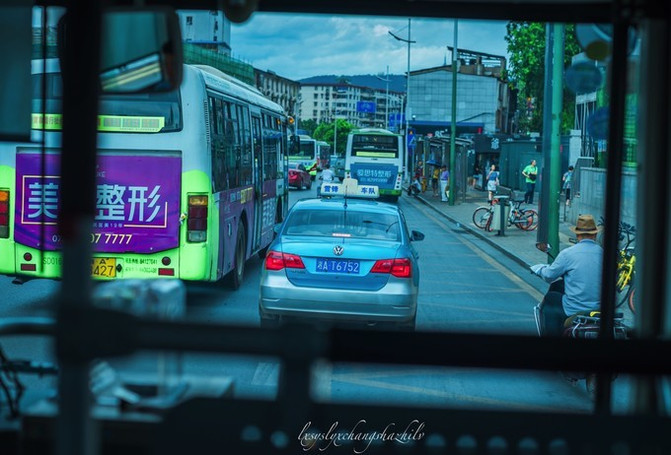

Yuelu Mountain Scenic Area Tickets: Free tour
The ropeway is 30 yuan for upward travel, 25 yuan for downward travel, and 50 yuan for round trip. Scenic spot sightseeing bus: 20 yuan/person (one-way), 30 yuan round trip.
Opening hours: 06:00~23:00
Recommended tour time: 6 hours
Best season: Yuelu Mountain holds the Red Maple Culture Festival every autumn, and it is also a good place to escape heat in summer

Yuelu Mountain, which is adjacent to the Xiangjiang River and has many cultural relics and historic sites, is one of the 72 peaks of Hengshan Mountain in Nanyue. Yuelu Mountain is located on the south bank of Hunan River in Changsha City, Hunan Province. It is an urban mountainous scenic spot. It gathers the essence of Hunan and Chu culture, has many scenic spots and historic sites, integrating Confucianism, Buddhism and Taoism. Revolutionary relics are scattered and rich in plant resources.

The spots under the sun are also very beautiful. It is indeed a good place to come here in summer to climb mountains and escape the heat.


This Yuelu Academy is one of the four famous academies in Chinese history. As one of the oldest academies in the world, its ancient traditional academy buildings are completely preserved today.

In fact, I have climbed Yuelu Mountain several times before. This Aiwan Pavilion is my destination today. Aiwan Pavilion, one of the four famous pavilions in China, is located in Qingfeng Gorge. During the Republic of China, Mao Zedong, Cai Hesen, Luo Xuezan, Zhang Kundi and others often came to Yuelu Mountain to gather together to discuss national affairs and explore revolutionary truth here
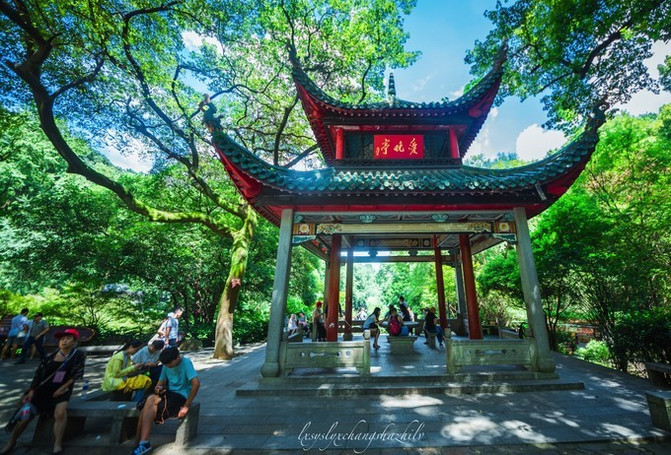
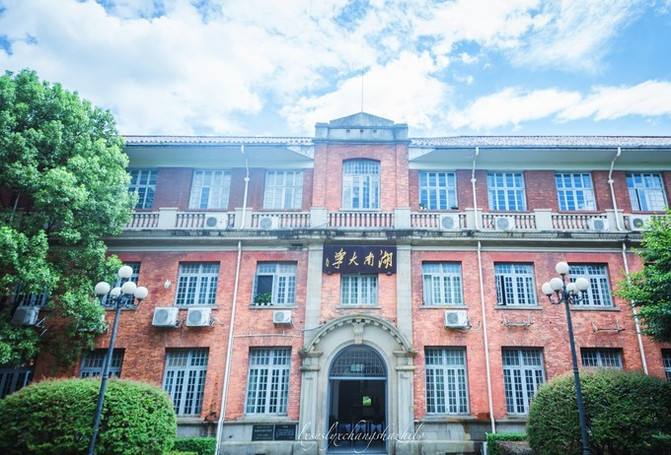
After taking a rest in Aiwanting, we went down the mountain and arrived at Hunan University. It is also a place you can visit casually. The school has the honor of enjoying the honor of "a thousand-year-old school and a century-old school". A tall statue of Chairman Mao is erected on the roadside of the school. Looking into the distance

Leaving Hunan University, you will quickly take a bus to the Juzizhou Bridge. Walking down in the middle of the bridge will lead to the Juzizhou Scenic Area. Juzizhou is an impact sandbar in the Xiangjiang River and the largest inland continent in the world. Looking west to Yuelu Mountain and facing Changsha City in the east, surrounded by water and stretching for dozens of miles. It is one of the important scenic spots in Changsha. You can take the subway directly to the Juzizhou Scenic Area
Tickets: Free (20 yuan per person for shuttle bus in the scenic area)
Best season: suitable for all seasons
Recommended play: 2-3 hours
Opening hours: All day

I used to hear that Changsha has serious smog. Maybe I was lucky, but Changsha with blue skies and white clouds is still very beautiful.

Mao Zedong's youth artistic sculpture stands at the head of Juzizhou in Changsha. The statue highlights Mao Zedong's ambitious and youthful image. The total height is: It is 32 meters long, 83 meters long, 41 wide, and has a total area of 3500 square meters. The statue was built based on the image of Mao Zedong in his youth in 1925. Can I tell you that I came here to see the statue of Mao Zedong? Mao Zedong stared at the surging Hunan River flowing north. The popular "Qinyuanchun·Changsha" was written by young Mao Zedong at the head of Juzizhou in Changsha





You can also take a yacht here to blow the wind and see the scenery on both sides of the Xiangjiang River. It is also very pleasant. I won't tell you that the last time I came to Juzizhou, I said I visited the entire journey on foot. If the weather is hot, I still recommend taking the shuttle bus in the scenic area to save you a lot of time.



The small inter-section train in Juzizhou is very beautiful. The inter-section train can travel around the scenic area and get on and off at 5 stations. Many people are queuing up to get on this small train and experience it.




Many people may ignore this side of Juzizhou. There is a river temple here. Museums and beach parks. The museum beach park is not open yet. It is actually very hot when the sun is strong in the afternoon, and there is not much interest in visiting Juzizhou slowly.


When I left, I saw some kayaking on the river

It is said that Changsha's nightlife is the most interesting. Many young people rarely go out because of the hot battles during the day. Previously, they saw a beautiful photo of Du Fujiang Pavilion on the Internet and came to take a photo of it. At night, many people will choose to come to the riverside for a walk and chat, eat snacks and drink beer by the riverside. This is what life should be like


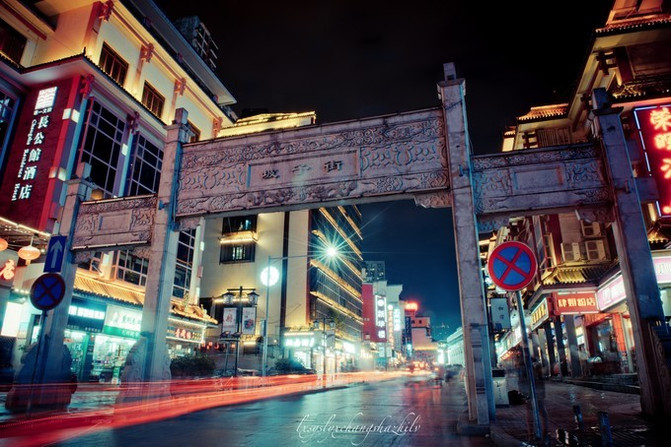
Pozi Street and Taiping Old Street are already crowded at night. Fortunately, it's not very hot at night. Thinking about the sweating when you go out in Changsha during the day, I took a few night views of popular areas in Changsha and share them with everyone. There is also Changsha's Huo Palace. Everyone knows that these are one of the places where Changsha specialties are concentrated. Before coming to Changsha, I actually carried a tripod on my first trip to Xizang and Qinghai. I didn't expect it to come in handy in Changsha. It's really inconvenient to take it out when you go out normally.
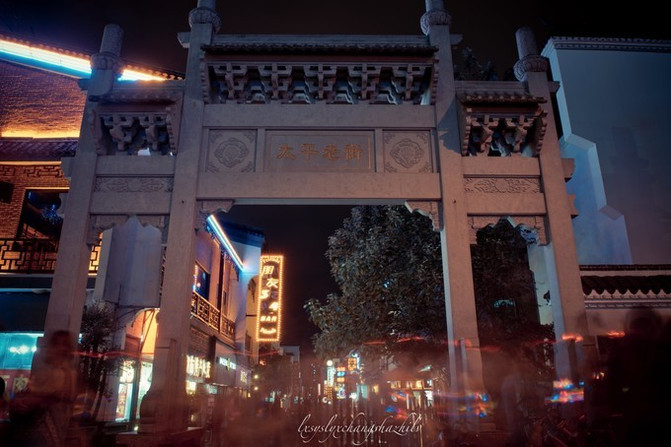




Okay, now let's recommend Changsha's delicious snacks to everyone! Changsha mainly focuses on Hunan cuisine. When it comes to Hunan cuisine, it has a long history. During the Western Han Dynasty, there were 109 varieties of Hunan dishes, and there were nine major categories of cooking methods. After the Six Dynasties, Hunan's food culture was rich and active. The Ming and Qing Dynasties were the golden period for the development of Hunan cuisine, and the unique style of Hunan cuisine was basically a foregone conclusion. After the founding of the People's Republic of China, especially since the reform and opening up, it has developed better. Many people mentioned that the first thing that Changsha basically thinks of is the delicious snacks in Changsha
Changsha snacks mainly include: flavored shrimp, Changsha stinky tofu, sugar and oil cake, yellow duck call, Deyuan steamed buns, spicy chicken, Yang Yuxing, etc.
Changsha snack streets are concentrated in Pozi Street, Huo Palace, Huangxing Road Pedestrian Street, Nanmenkou and other places


Sugar and oil cake is a traditional snack in Changsha. It is made of glutinous rice. It is fragrant, sweet, glutinous and soft, crispy on the outside and tender on the inside. It can be bought in ordinary streets and alleys. When I was a child, people still used sugar-oil cake for breakfast. Although it was fried in an oil pan and wrapped in syrup, it didn't feel greasy when eaten.
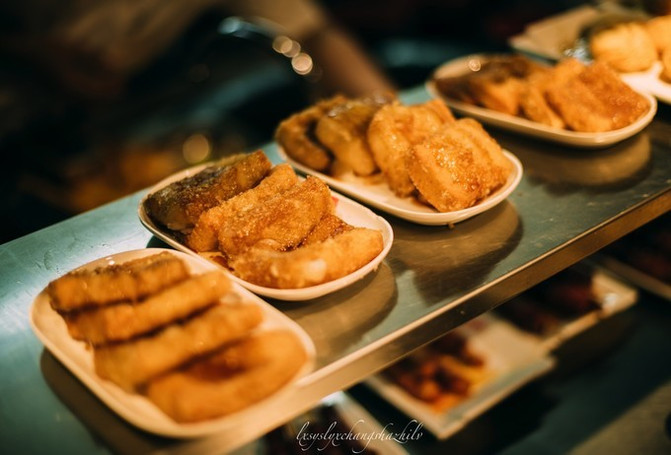

The taste of shrimp is not unique to Changsha. Even Guijie in Beijing has spicy crayfish. However, shrimp, which is suitable for Changsha people, has a better flavor, spicy and delicious flavor. Diners are sweating profusely and have spicy mouths every time they eat, but they still shout that they are addicted. In the hot summer, stir-fry a bowl of flavored shrimp, have a bottle of cold beer, and open your arms to chat all night long

Changsha has a long history of producing steamed buns, cakes and other snacks, which have been recorded for hundreds of years. Moreover, there are many varieties, and the "Hunan" flavor is particularly strong

Out-of-town tourists generally would not expect that something so dirty and smelly would be particularly fragrant after frying. When poured with chili water, pickled mustard and chopped green onion and other seasonings, it would almost drain the saliva. Even Chairman Mao once said that stinky tofu smells bad and tastes delicious.
Changsha's traditional cuisine also includes flavored crab, delicious saoluo, salted duck, braised pork knuckles, rice noodles, barbecue, shaved jelly, chopped pepper fish head, steamed vegetables in Liuyang, etc. There are too many. Besides, I'm afraid I'll drool.
Previous Article:A [Free Travel Guide to Zhangjiajie] tells you where is the best place to go to Zhangjiajie all year round?
Next Article:Watch an everlasting love and visit Wulingyuan
